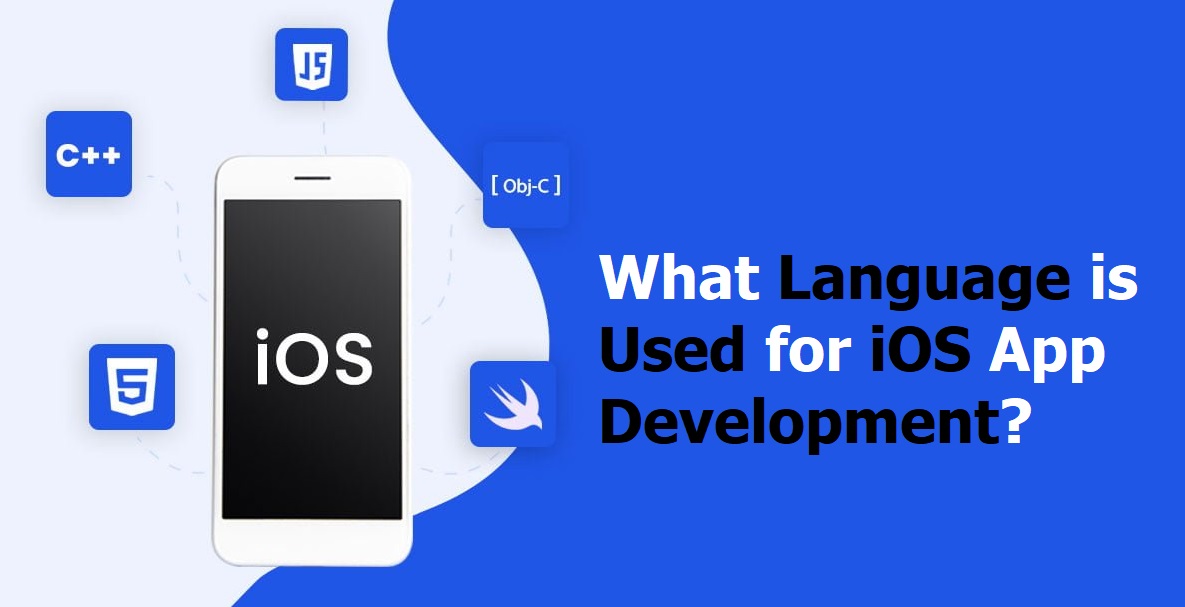A software development process is a structured approach to developing or building software. Developing software refers to an iterative logical process, which aims to create programmed software. It also meets unique business or personal requirements, goals, objects, and procedures. The software engineers write computer code to build the software. Several types of approaches are available in the software development process, which come with different development methods. However, software development also includes multiple steps, where include researching, designing, data, and process flow, including other technical documents for writing, comprehensive testing, debugging, and publishing. Additionally, this working process is well-known as the SDLC-software development life cycle.
Generally, building software is negotiable to meet the specific needs of a specific client or business. Software is essential for every company and business for better quality management of the service or entire organization. Adding software to the company means making well-structured services, which focuses on applying the systematic approach to the process of software development. For developing convenient software, it is required to have a clear plan & process to achieve the best result. Different software requires different strategies to develop. Here, we are going to describe the software development lifecycle regarding the software development cost and process to choose the best software development service and process as per the requirements.
What is Software Development Life Cycle?

The SDLC-software development life cycle is also a systematic approach for designing, developing, and testing high-quality software used by the software industry. The main goal of SDLC is to develop high-quality software, which provides the best customer experience as per the client’s desire. It also helps to reach completion within times and cost estimates.
Several activities to follow to do the proper SDLC and the following activities are;
Planning
Implementation
Testing
Documentation
Deployment & Maintenance
Maintaining
These are the following activities that have to follow by the software engineers to work professionally to ensure the best software development life cycle-SDLC.
Planning is the initial stage of the software development process. It is the crucial stage where analysis is required by the most skilled and experienced software engineers in the organization. After that, the developers need to gather information by researching and analyzing requirements from the client. It will help to create a scope for generating documents.
Implementation is the stage where the software developers start writing the code as per the analyzed requirements. In this phase, the software development process starts comfortably.
Testing is also an essential stage of software development. Here, the software engineers aim to identify any errors, bugs, or flaws in the software. Testing of software happens after the compilation of the software development process.
Documentation is also a crucial phase in the software development process to check each activity of the software development process. The documentation is preferable and the best option for future references, and it will help to do the enhancement in the development process.
Deployment & Maintenance are required when the software development process is complete. Then, you can deploy the software once it is approved for release.
Maintaining is the stage that occurs with an operational project. This phase is essential to ensure the best user experience, which involves the modification of a few features over some time. It is the stage to monitor and focus on the system performance, including the bug rectification and implementing requested changes.
The Software Development Methodologies

Several types of software development methodologies are available to perform as per the project requirements. It also depends on the size of a project, including the business goals, software engineers team, and other factors. Here, we are going to describe the best software development processes to do the work efficiently.
Waterfall
Agile and Scrum
Incremental and Iterative
V-Shaped
Spiral
These are the best software development processes to build incredible software.
Agile and waterfall are the two leading software development methodologies. These two methodologies are the best and most commonly used software development.
Waterfall

The waterfall is a convenient model for the software development process. It is also well-known as a linear sequential model or Classic lifecycle model, which is the oldest technique and most traditional model to develop software. The waterfall method starts with each following step of the SDLC in sequence, where you have to finish each one sequentially before moving to the next one. In an actual waterfall, implementation requires the following activities like requirements, design, code, testing, and operations. It is a plan-driven process for completing the software development conveniently. However, to work or develop software with this methodology, you need to know everything that needs to be done in order completely.
The phases of the Waterfall method is;
Planning: It is essential for a convenient range of planning as per the client’s desire with the other beneficial sides to highlight.
Requirements: The requirements are related to the project documentation, including the gathering information and analysis.
System & software design: The design of a system or software is associated with its UI, including resulting in the software architecture.
Implementation: Implementation is the stage that involves coding in the development with proving options and integration of software.
Testing: Testing the software after the development is also a systematic approach. It is negotiable for systematic discovery and debugging of defects from the software.
Deployment: Deployment Occurs when the full software development project is ready to hand over to the client.
Maintenance/Updates: Maintenance or Updates are an operational task. It requires installations, support, and maintaining the complete software systems.
It is the complete structure of the Waterfall method with the documentation. This development process is negotiable when your goals, requirements, and technology stack will not change radically during the software development process. In the stage of practical terms, the Waterfall method is suitable for large organizations. Also, before starting the software development process with this, it requires sign-offs and documentation on all requirements with scope. This software development method involves different phases, and every stage terminates before the next stage begins. But this software development method is often slow and costly because of its rigid structure and tight controls.
Agile and Scrum

The agile software development process is a famous methodology scrum. This method is a preferable option for an iterative and dynamic approach to development. Agile comes with cross-functional teams work, whereas the Waterfall process is strict and sequential flow. In this software development method, the teams work in the sprint with a timeframe like 2-weeks to 2-months for developing and releasing usable software to customers for feedback. However, it is a lightweight software approach, which focuses on flexibility, continuous improvement, and speed. Also, this methodology follows an incremental approach, which allows the software engineers to work comfortably. It is an excellent method for mobile apps development with the fast-moving, releasing often, and responding to the real needs of the end-users. The developers can initially start with a simplistic project design and fully begin the work as per the modules. The modules of the work may carry for weekly or monthly sprints, where each of the sprints requires project priorities to evaluate with executed testing. In the equivalent stages of the Waterfall method, all the sprints are completed at every single sprint. In the Agile process, all these sprints are preferable for exploring bugs, and customer feedback, which incorporates into the design before the next sprint begins. With the involvement of well-managed and documentation enforced, the rapid pace of software development is possible towards the project. If all the things are clear and correctly done by the developers, it is possible to achieve the best results in a fast, low-risk, and efficient workflow.
Agile methodology phases are;
Product Backlog: It is the stage of prioritizing the list of work for the software engineers, which is derived from the roadmap and its requirements.
Sprint backlog: It is the stage of the list of tasks, where all the tasks in the sprint backlog are identified with the involvement of the Scrum team. Also, the team needs to complete the work during the Scrum sprint.
Sprint (Design & Develop): It is the set of a period for completing work. In this phase, the specific work needs to be completed during the selected time, and the product has to be ready for review.
Release working software: Releasing software means publishing the final version of software to the end-users after further enhancements, bug fixes, and solving other issues.
Feedback and validation (add to backlog): It means the user preferences, where you will find how the end-users are experiencing the product.
Plan next sprint: It means completing the work after a step-by-step process, where planning is completed in collaboration with the whole scrum team.
This Agile Scrum methodology is preferable for dynamic software engineer teams, those who do continuous updates to products. This software development process is also preferable for most startups and technology companies for testing new products or performing continuous updates to long-standing ones. The Agile method shows companies to move faster to test their theories without making trouble the entire livelihood on a major release for the users. This method is not preferable for the extremely low budgets and timelines. Because of its dynamic nature, the project can go over its initial timeframe or budget as per the working process.
Incremental and Iterative
The incremental and iterative software development method is preferable for small pieces of software and testing them to identify the user feedback. It is also a middle ground process between the structure and upfront planning of the Waterfall method, including the flexibility of the Agile format. In this incremental process of software development, it increases the product adds with a straightforward form of a new function or feature. Here, the software engineers come up with an overall plan and build an MVP with only the core functionality. Then, the developers include several additional features depending on the user’s feedback.
The Iterative software development includes a version of the full specifications of all your planned features. It is the method of building the most simple version of each feature and upgrading it across the board.
The Incremental Phases are;
Specifications
Development
Validation
These are the Incremental phases of software development, which are required to repeat for each version.
The Iterative Phases are;
Analysis
Design
Development
Testing
These are the stages of Iterative software development phases, where you need to repeat the process until you are ready to release the product.
These two methods are preferable for the software development team that have clear requirements. It also provides more flexibility than the Waterfall method delivers. These methods add a certain level of flexibility, which is ideal for large projects and defined scopes with less risk tolerance. But the Inceremetal process is excellent, where you can get early feedback on your core feature, and that will help you validate your business case right away. On the other hand, the Iterative process allows the users with an early look at the full product, where you can get a better focus on feedback. Lastly, the software development methodology is not preferable for the teams without a clear long-term technology plan.
V-Shaped

V-Shaped software development approach indicates to complete the classic of the Waterfall method. This process makes up the biggest downfall. Regarding the sequential work, this development process saves all the testing time of the software engineers for the front-end and each stage of the V-shaped process. However, this process is followed by strict validation and verification, including other steps where requirements need to be tested before moving on. You can start the next phase only after the compilation of the previous stage. Also, each development activity includes a testing movement corresponding to it. The verification is essential in this stage to find the product development phase whether specified requirements meet or not. The validation process requires evaluating software after the compilation of the development phase, which helps resolve whether the software meets the customer expectations and requirements.
The V-Shaped Phases are;
Requirements
Specifications
High-level design
Low-level design
Development
Unit testing
Integration testing
System testing
Acceptance testing
This V-Shaped methodology is preferable for working on smaller projects software engineers with a tight scope. If you have a small project to work with relatively clear and static requirements with a scope, then the V-Shaped approach would be an excellent choice to work comfortably. This software development approach comes with the best opportunities to test along the way rather than running several risks of following a plan. Additionally, it is a highly disciplined model, where all the phases are completed one at a time. If you are seeking more flexibility with early input from users, it is not preferable to use this V-Shaped approach.
Spiral

The Spiral software development is a risk-driven controlled prototyping approach to use. This methodology comes with the combination of the V-Shaped process, incremental nature of Iterative, Incremental, and Agile. It helps the software engineers to build the prototype in the early development process, particularly identifying the risk areas. All the assessments of prototyping results come with the further determination of risk areas to prototype. Once you are on the plan to develop software, this development approach allows you to do an in-depth risk analysis to identify errors or areas of excessive risk. After completing a specific stage, the scope expands further out like a spiral, where you need to start planning for another risk assessment.
The Spiral software development phases are;
Planning
Risk Assessment
Development and validation
Evaluate results and plan next loop
While working with the risk-average team, this Spiral methodology is preferable for working on large projects. It is the best approach to work with, which reduces risks for working with a large project. While developing large or critical projects, this process requires a high level of documentation and validation, including the way of a right following path. This software development approach is beneficial for the customers who are not sure about their requirements in the project and expect major edits during the product’s development. Additionally, this Spiral software development approach is time-consuming as well as expensive and not appropriate for small projects. Therefore, this development process is only preferable when you are sure about your requirements and have a large budget to go for this model.
Finale Thoughts
Several kinds of techniques and methodologies are available for developing software. Different stages are required, where you will find different paths laid out in front of you are endless. Therefore, you need to remember always that every software development process and method requires four basic principles. These are, first of all, understanding the development process, building, testing, and evolving. All the software methodologies that we describe above come with the best approach of SDLC. Here, you pick the process that feels right for you and your team as per the development statics and requirements. We hope that you find this guide well and it helps you understand the fundamentals of software creation. As a software and mobile app development company, we “REXO IT” also provide Software development services with our professional software engineers. We have developed so much software this year with 100% client satisfaction.










